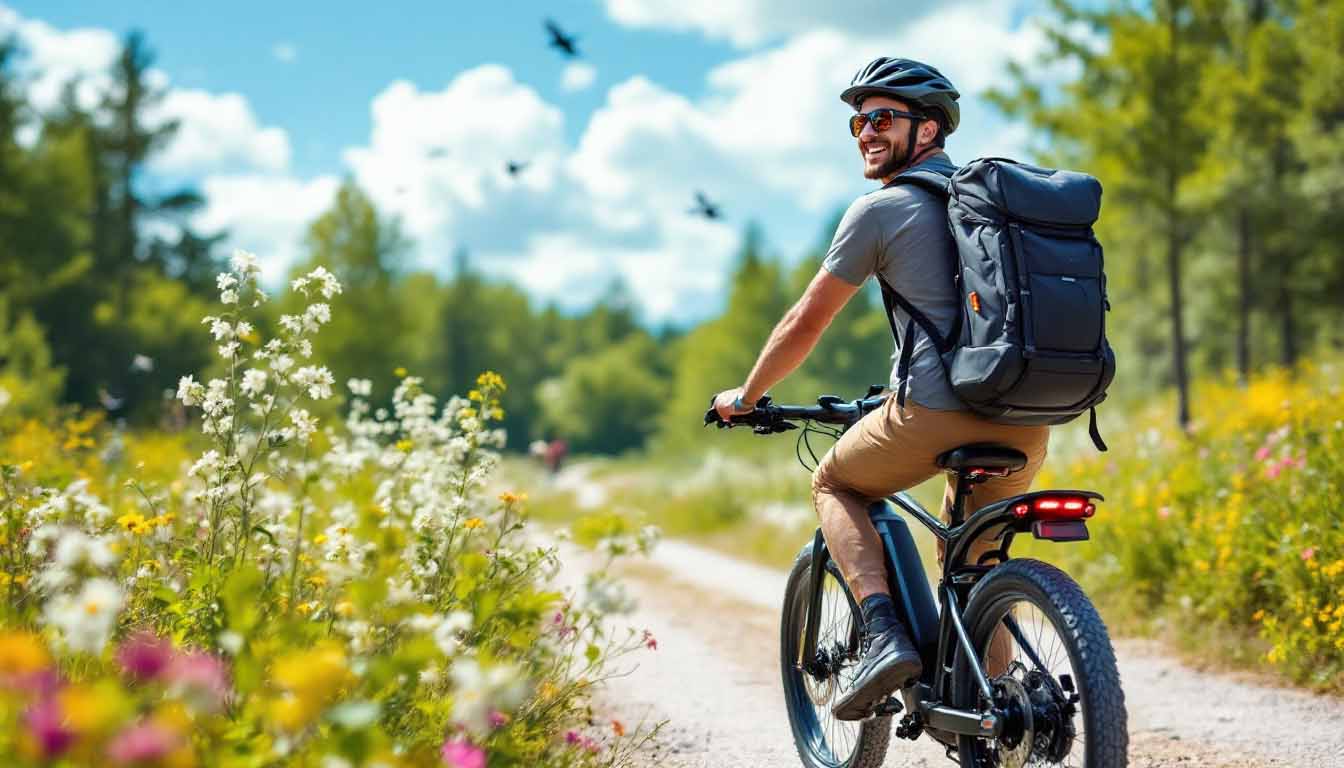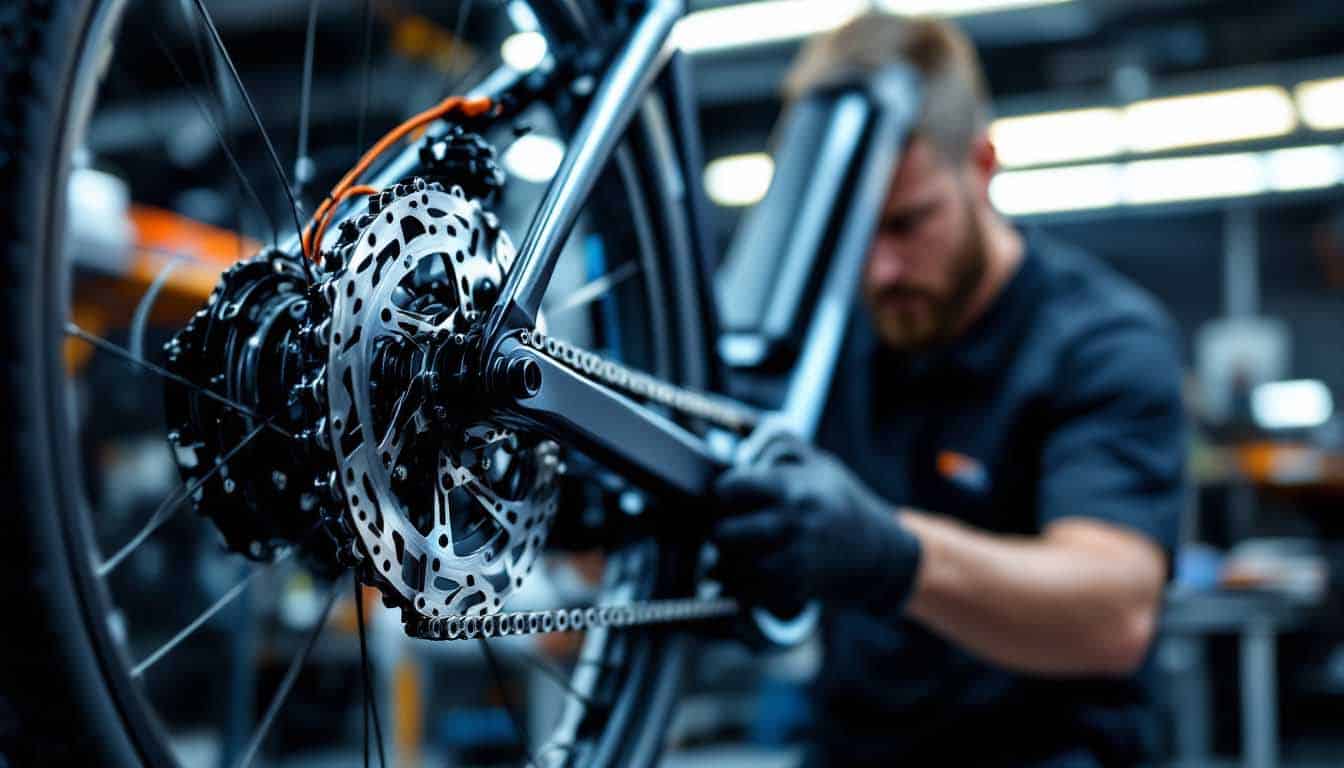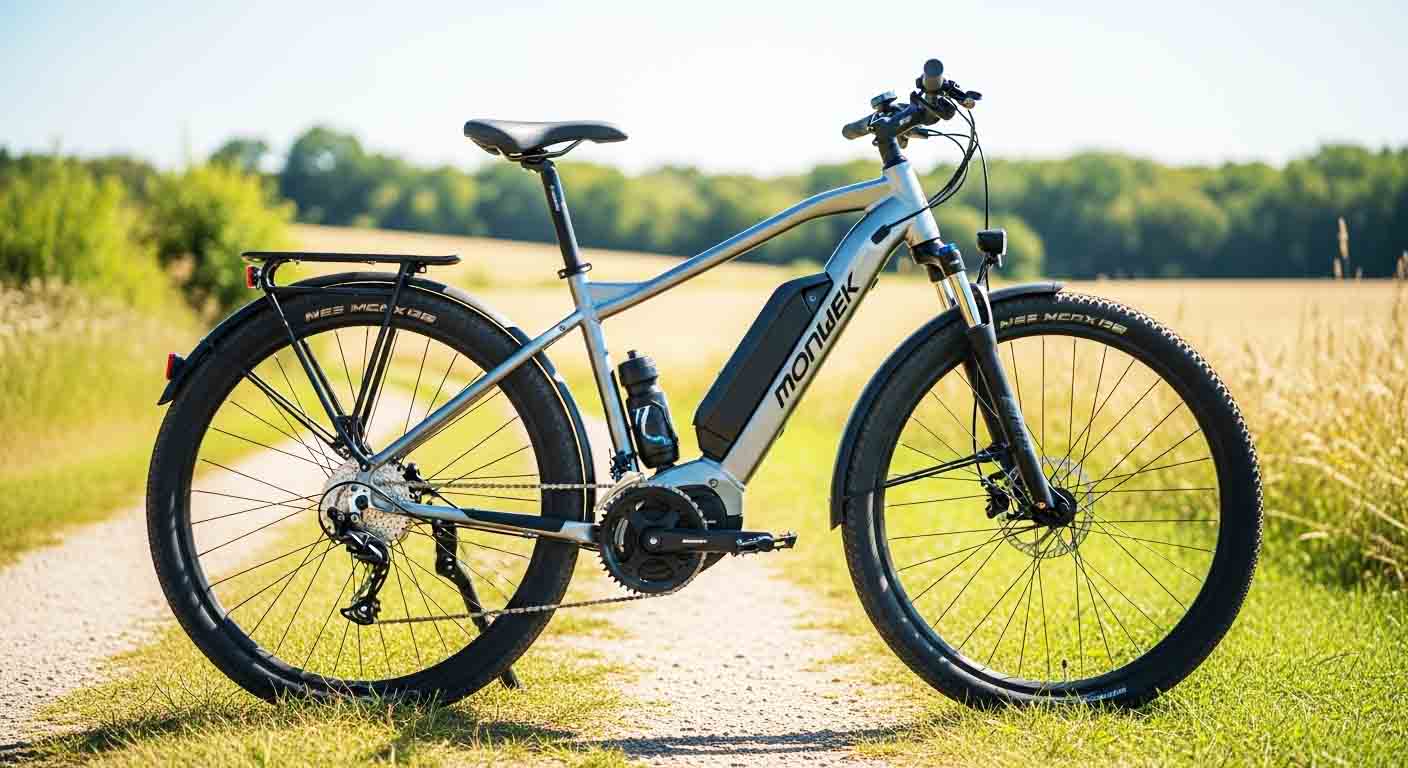Winter Riding Tips: How to Use and Maintain Your E-Bike in Cold Weather
Winter Riding Tips: How to Use and Maintain Your E-Bike in Cold Weather
Riding an e-bike can be one of the most enjoyable, eco-friendly, and practical ways to commute or explore your city. But when the cold weather sets in, many riders wonder whether their e-bike can handle the challenges of winter. The truth is, you can ride your e-bike safely and effectively during the colder months, but it requires proper preparation, care, and maintenance.
In this article, we’ll share essential winter riding tips to help you get the most out of your e-bike in cold weather. From battery care to safety gear, you’ll learn how to protect both yourself and your bike while ensuring smooth rides throughout the season.
Why E-Biking in Winter is Different
Unlike traditional bicycles, e-bikes depend heavily on batteries and electrical components, which can be sensitive to extreme temperatures. Cold weather affects battery performance, tire traction, braking, and even rider comfort.
Here’s what makes winter riding unique:
-
Battery range decreases in cold temperatures.
-
Slippery roads increase the risk of falls.
-
Salt and moisture from snow or rain can corrode parts.
-
Visibility is often reduced due to shorter daylight hours.
Knowing these challenges helps you prepare better and enjoy safer winter rides.
1. Protect Your E-Bike Battery
The battery is the heart of your e-bike, and winter can take a toll on its performance. Cold weather causes lithium-ion batteries to lose efficiency, meaning your bike’s range will decrease.
Tips for winter battery care:
-
Keep it warm indoors: Store your battery inside at room temperature when not in use.
-
Charge it indoors: Always charge your battery in a warm environment, never outside in freezing conditions.
-
Avoid deep discharges: Try not to let the battery completely drain, as cold weather makes it harder to recharge.
-
Use insulated covers: Consider battery covers or neoprene sleeves to help keep it warm while riding.
By taking care of your battery, you’ll maintain better range and extend its lifespan.
2. Choose the Right Tires for Winter
Tire choice is critical when riding in cold or slippery conditions. Standard e-bike tires may not provide enough grip on icy or snowy roads.
Winter tire options:
-
Studded tires: Best for icy conditions; metal studs dig into ice for traction.
-
Fat tires: Provide more stability on snow or slush.
-
Winter-specific rubber compounds: Softer rubber stays flexible in cold weather, offering better grip.
Don’t forget to check your tire pressure. Lowering it slightly increases traction, but avoid going too low, as it can damage rims or cause flats.
3. Dress for Safety and Warmth
Riding in winter means you need to protect yourself just as much as your bike. The cold can quickly sap your energy, and wind chill while cycling makes it feel even colder.
Clothing essentials:
-
Layer up: Use moisture-wicking base layers, insulating mid-layers, and waterproof outer layers.
-
Gloves: Protect your hands from freezing temperatures and maintain grip on the handlebars.
-
Footwear: Insulated, waterproof shoes or overshoes keep your feet warm and dry.
-
Helmet with cover: A thermal cover or liner helps prevent heat loss through your head.
-
High-visibility gear: Shorter days mean you should wear reflective clothing and use strong bike lights.
Being comfortable ensures you can focus on the road and enjoy your ride.
4. Adjust Your Riding Style
Cold and slippery conditions require different riding techniques. Aggressive riding may work in summer but can be dangerous in winter.
Winter riding adjustments:
-
Brake earlier and more gently to avoid skidding.
-
Slow down on icy patches or wet roads.
-
Keep a safe distance from cars and other cyclists.
-
Avoid sudden movements with the handlebars or pedals.
-
Use pedal-assist wisely: Higher assist levels drain the battery faster in cold weather, so balance efficiency with control.
A smooth and cautious riding style helps prevent accidents.
5. Maintain and Clean Your E-Bike Regularly
Winter riding exposes your e-bike to salt, moisture, and dirt, all of which can damage components if not addressed. Regular cleaning and maintenance are essential.
Maintenance checklist:
-
Rinse off salt and slush after every ride with warm water (avoid high-pressure sprays near electrical components).
-
Dry thoroughly before storing indoors.
-
Lubricate the chain more often, as salt and moisture wash away protective oil.
-
Check brakes frequently, since cold and wet conditions wear pads faster.
-
Inspect electrical connections for corrosion or dirt buildup.
Routine care keeps your e-bike in top shape and ready for the next ride.
6. Use Proper Storage Practices
When you’re not riding, how you store your e-bike in winter makes a big difference.
-
Keep it indoors: A garage, basement, or inside your home is best.
-
Avoid freezing temperatures: If indoor storage isn’t possible, use a weatherproof cover.
-
Battery storage: Store at 50–70% charge if you won’t ride for weeks.
Proper storage prevents long-term damage and ensures your e-bike is ready when you are.
7. Safety Accessories for Winter Riding
Besides clothing, consider adding some extra accessories for winter rides:
-
Bright front and rear lights: Essential for visibility in shorter daylight hours.
-
Mudguards: Keep snow, water, and mud from spraying onto you.
-
Bell or horn: Helps alert drivers or pedestrians in low-visibility conditions.
-
Mirror: Provides better awareness in winter traffic when conditions are unpredictable.
Small upgrades can greatly improve comfort and safety.
8. Plan Your Routes Wisely
Not all bike paths are cleared or safe in winter. Choosing your routes carefully can make a big difference.
-
Stick to main roads or bike lanes that are regularly plowed.
-
Avoid shaded areas where ice lingers longer.
-
Have a backup plan in case conditions become unsafe.
Planning ahead ensures a smoother, less stressful winter ride.
Final Thoughts
Riding your e-bike in winter is not only possible but also rewarding, as long as you prepare properly. By caring for your battery, tires, and components, adjusting your riding style, and keeping yourself warm and visible, you can enjoy safe and reliable e-bike adventures all season long.
Remember: your e-bike is a year-round companion. With the right approach, winter doesn’t have to stop your riding—it just requires a little more care and preparation.
So gear up, take it slow, and keep rolling even when the temperature drops!
RELATED POSTS
Retrospec Remi Adult Bike...
$36.99 (as of October 13, 2025 03:34 GMT +00:00 - More infoAs a site dedicated to cycling innovation, gear reviews, and next-generation bike technology, we sometimes recommend products and accessories that can enhance your riding experience. When you purchase through our affiliate links, we may earn a small commission at no extra cost to you. This support helps us continue creating valuable content, guides, and reviews for the biking community.
Please note: Product prices and availability are accurate as of the date/time indicated and are subject to change. Any price and availability information displayed on Amazon.com at the time of purchase will apply to your order.
We only recommend products we believe bring real value to cyclists who are passionate about performance, safety, and the future of biking technology.
)Adult Bike Helmets, Adjus...
$32.99 (as of October 13, 2025 03:34 GMT +00:00 - More infoAs a site dedicated to cycling innovation, gear reviews, and next-generation bike technology, we sometimes recommend products and accessories that can enhance your riding experience. When you purchase through our affiliate links, we may earn a small commission at no extra cost to you. This support helps us continue creating valuable content, guides, and reviews for the biking community.
Please note: Product prices and availability are accurate as of the date/time indicated and are subject to change. Any price and availability information displayed on Amazon.com at the time of purchase will apply to your order.
We only recommend products we believe bring real value to cyclists who are passionate about performance, safety, and the future of biking technology.
)ROCKBROS Bike Seat for Me...
$17.76 (as of October 13, 2025 03:34 GMT +00:00 - More infoAs a site dedicated to cycling innovation, gear reviews, and next-generation bike technology, we sometimes recommend products and accessories that can enhance your riding experience. When you purchase through our affiliate links, we may earn a small commission at no extra cost to you. This support helps us continue creating valuable content, guides, and reviews for the biking community.
Please note: Product prices and availability are accurate as of the date/time indicated and are subject to change. Any price and availability information displayed on Amazon.com at the time of purchase will apply to your order.
We only recommend products we believe bring real value to cyclists who are passionate about performance, safety, and the future of biking technology.
)Aomiker Waterproof Bike Frame Bag -...
$19.99 (as of October 10, 2025 03:29 GMT +00:00 - More infoAs a site dedicated to cycling innovation, gear reviews, and next-generation bike technology, we sometimes recommend products and accessories that can enhance your riding experience. When you purchase through our affiliate links, we may earn a small commission at no extra cost to you. This support helps us continue creating valuable content, guides, and reviews for the biking community.
Please note: Product prices and availability are accurate as of the date/time indicated and are subject to change. Any price and availability information displayed on Amazon.com at the time of purchase will apply to your order.
We only recommend products we believe bring real value to cyclists who are passionate about performance, safety, and the future of biking technology.
)Womens Workout Tops Short Sleeve Sh...
$9.99 (as of October 13, 2025 03:34 GMT +00:00 - More infoAs a site dedicated to cycling innovation, gear reviews, and next-generation bike technology, we sometimes recommend products and accessories that can enhance your riding experience. When you purchase through our affiliate links, we may earn a small commission at no extra cost to you. This support helps us continue creating valuable content, guides, and reviews for the biking community.
Please note: Product prices and availability are accurate as of the date/time indicated and are subject to change. Any price and availability information displayed on Amazon.com at the time of purchase will apply to your order.
We only recommend products we believe bring real value to cyclists who are passionate about performance, safety, and the future of biking technology.
)Rhinowalk Bike Handlebar Bag, Bicyc...
$19.99 (as of October 10, 2025 03:29 GMT +00:00 - More infoAs a site dedicated to cycling innovation, gear reviews, and next-generation bike technology, we sometimes recommend products and accessories that can enhance your riding experience. When you purchase through our affiliate links, we may earn a small commission at no extra cost to you. This support helps us continue creating valuable content, guides, and reviews for the biking community.
Please note: Product prices and availability are accurate as of the date/time indicated and are subject to change. Any price and availability information displayed on Amazon.com at the time of purchase will apply to your order.
We only recommend products we believe bring real value to cyclists who are passionate about performance, safety, and the future of biking technology.
)Thousand Heritage 2.0 Adu...
$99.00 (as of October 13, 2025 03:34 GMT +00:00 - More infoAs a site dedicated to cycling innovation, gear reviews, and next-generation bike technology, we sometimes recommend products and accessories that can enhance your riding experience. When you purchase through our affiliate links, we may earn a small commission at no extra cost to you. This support helps us continue creating valuable content, guides, and reviews for the biking community.
Please note: Product prices and availability are accurate as of the date/time indicated and are subject to change. Any price and availability information displayed on Amazon.com at the time of purchase will apply to your order.
We only recommend products we believe bring real value to cyclists who are passionate about performance, safety, and the future of biking technology.
)ILM Adult Bike Helmet wit...
$64.99 (as of October 13, 2025 03:34 GMT +00:00 - More infoAs a site dedicated to cycling innovation, gear reviews, and next-generation bike technology, we sometimes recommend products and accessories that can enhance your riding experience. When you purchase through our affiliate links, we may earn a small commission at no extra cost to you. This support helps us continue creating valuable content, guides, and reviews for the biking community.
Please note: Product prices and availability are accurate as of the date/time indicated and are subject to change. Any price and availability information displayed on Amazon.com at the time of purchase will apply to your order.
We only recommend products we believe bring real value to cyclists who are passionate about performance, safety, and the future of biking technology.
)SAEROVIE Bike Helmets for...
$25.99 (as of October 13, 2025 03:34 GMT +00:00 - More infoAs a site dedicated to cycling innovation, gear reviews, and next-generation bike technology, we sometimes recommend products and accessories that can enhance your riding experience. When you purchase through our affiliate links, we may earn a small commission at no extra cost to you. This support helps us continue creating valuable content, guides, and reviews for the biking community.
Please note: Product prices and availability are accurate as of the date/time indicated and are subject to change. Any price and availability information displayed on Amazon.com at the time of purchase will apply to your order.
We only recommend products we believe bring real value to cyclists who are passionate about performance, safety, and the future of biking technology.
)














